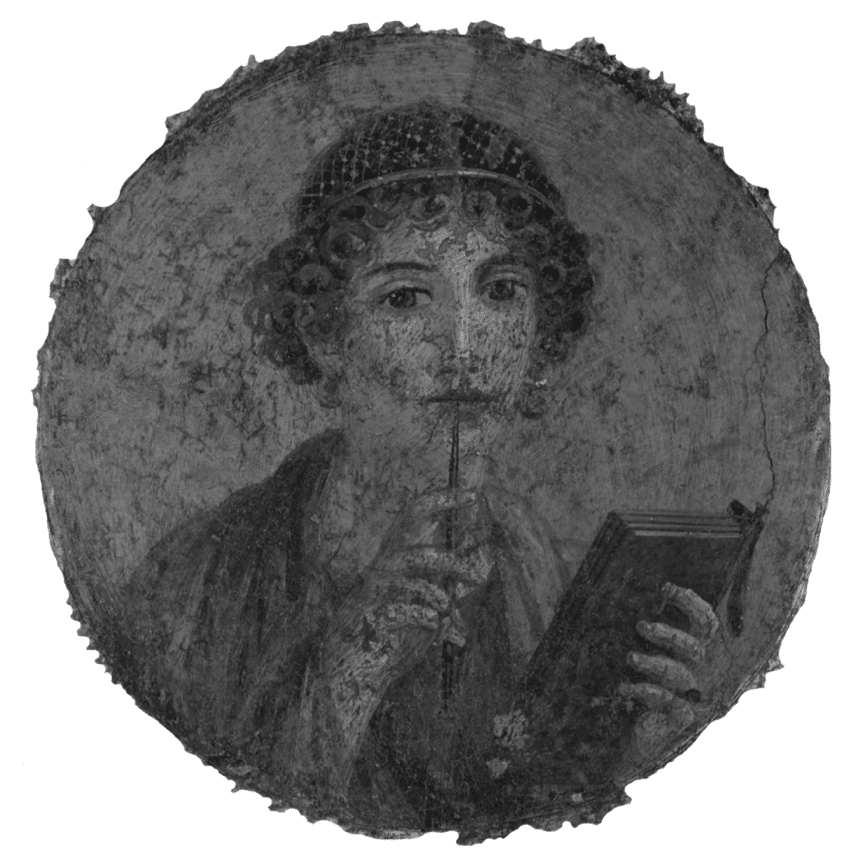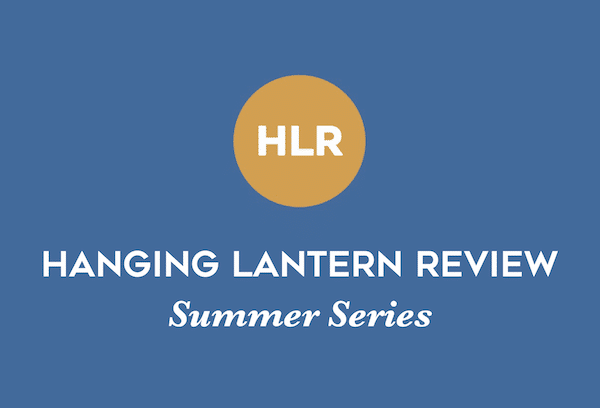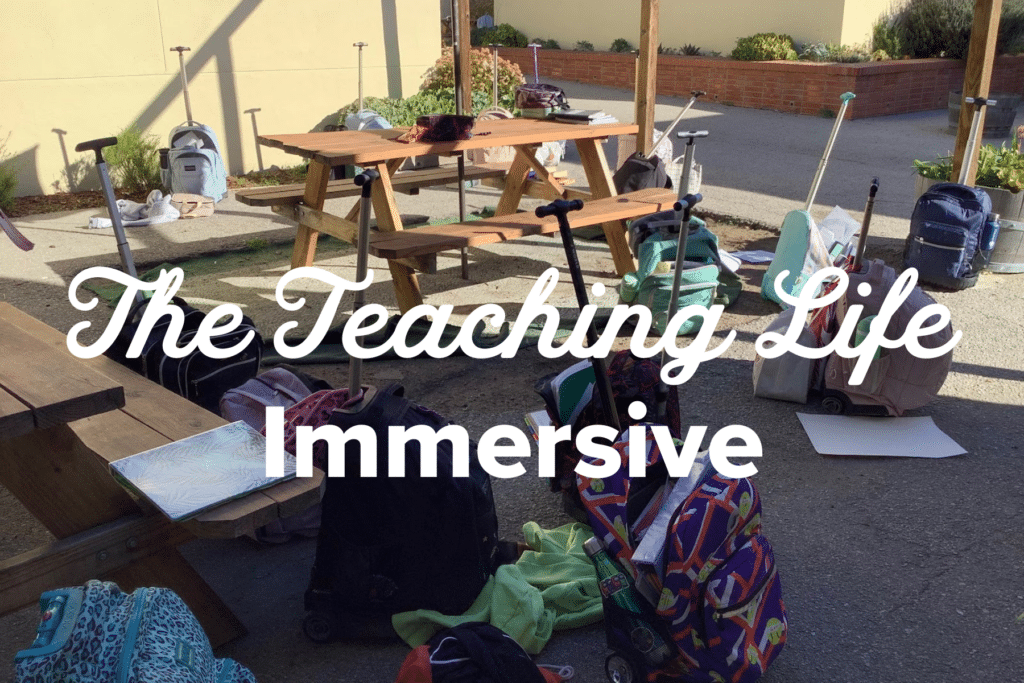This summer, we’re bringing you a review of SLOCA High School’s Hanging Lantern Review Issue #9! We posted about their print magazine (created and published by middle and high schoolers!) and Reading + Release Party last week but wanted to bring you more content from the actual magazine in a short summer series.
This week, we’re featuring a prose piece from one of our recent graduates, Sadie Richert. She also served on the Hanging Lantern team this year as a reader and copyeditor. A classicist through and through, Sadie, in this poem, rhapsodizes about a famous ancient mural piece and the woman depicted therein. It’s a moving piece about how much we can and can’t know about the past and the real people who lived in it.

Ekphrasis by Sadie Richert
They call her Sappho, that woman in paint whose hand and pen and tablet are poised as if for words, her eyes intent, impenetrable. Sappho of Lesbos—the “Tenth Muse” of the Greeks… as though she were the only ancient woman who could have rightly used such writing tools, and thus this fresco must of necessity depict her, lone female poet of the Ancients.
Others scoff at such speculation—Roman clothes, they suggest, or the tablet used only for arithmetic, or the recognizable pose gives her away. She’s simply a rich Roman flaunting her capable housekeeping skills, not a pensive poet with lyrical lines forming behind gleaming curls. The tablet’s hidden message? Not an ode but a matron’s grocery list. Her merchant husband of fifty has a reputation to keep up… he can’t be known for a slovenly wife.
You choose—the fate of the green-cloaked woman with her gold hair net. Actually, your attention has probably shifted already. Whatever your choice, you’d probably rather rant about the Roman men who fated her to such an existence, who either scorned girls’ schooling, leaving this Sappho to unchallenged glory, or forced their wives into lives of dignified number-crunching.
Indeed, why pity her at all, that girl gazing up, perhaps, simply to satisfy her painter’s pride in a pretty face? More likely, she never really existed at all—at least not with the wandering eyes and warm lips on which her stylus rests. She is leisure and the life of learning embodied, one of the great sisters themselves—the divine Muses. So one scholar claims.
It’s regrettable when the past is left so dark. One almost wishes for the well-lit propaganda pieces from an Emperor whose artists strove to emphasize a likeness never to be mistaken for any other, whose poets would belabor his significance in endless references and analogies. For a Pompeiian portrait second in fame perhaps only to the “Cave Canem” mosaic, it is astonishing that there is still so little consensus on this woman.
Yet, even if she is a Muse and no mortal at all, her eyes must not have been unseen in the faces of ancient women.
You can view more poetry, prose, and visual art from our students by purchasing HLR #9 at this link or in the Den. And stay tuned! Next year is a big year for Hanging Lantern—number 10!—and the students on the HLR team want to make it their biggest and best ever. Look out for their submission period in the fall and the Reading + Release Party at the end of 2023. It’s never too early to get excited!



















